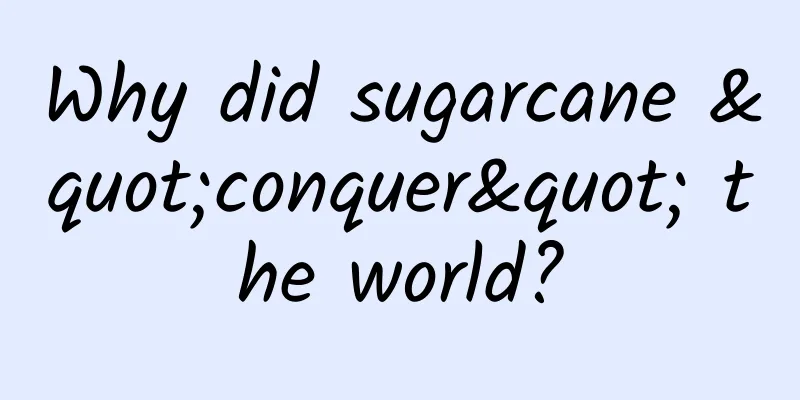Why did sugarcane "conquer" the world?

|
Sugarcane attraction conquers the world Apart from fruits, humans’ experience of sweetness mainly comes from sucrose. Sugarcane may have originated in New Guinea as early as 6000 BC, and spread to Asia along human migration routes around 1000 BC, where it hybridized with local wild sugarcane and gave rise to the sugarcane we know today. Sugarcane has a long history of cultivation in the Indian subcontinent, and is mentioned many times in the Vedas, which were written between 1500 and 600 BC. In the Vedas, sugarcane is used as a symbol of sweet attraction and appears in sacrificial rituals. At first, people grew sugarcane mainly for chewing. In Southeast Asia and India, people peeled off the hard outer skin of sugarcane and sucked and chewed its juicy stems. Later, sugarcane juice was boiled to produce solid sugar. The ancient Indian medical work "Surabhūti" lists 12 types of cane sugar. The solid sugar mentioned in Persian works in the 6th century BC is believed to have come from the Indus River Basin. This sugar is similar to the jaggery we know today: Indian brown sugar. The English word "sugar" is believed to have originated from the ancient Sanskrit word "sharkara". The word "柘" in the pre-Qin period of my country refers to sugarcane. The word "罐" did not appear until the Han Dynasty. The pronunciation of "柘" and "罐" may also come from the Sanskrit word "sharkara". Sugarcane did not spread to the Mediterranean region until around 600-1000 AD. The Arabs played an important role in the spread of sugarcane. With their conquest of Egypt, sugarcane entered Egypt around 640 AD. After that, sugarcane spread throughout the Mediterranean, Syria, Cyprus and Crete with the Arabs' cavalry, and entered Spain around 715 AD. There are countless descriptions of sugarcane in early Indian literature. Tamil literature often mentions sugarcane planted along the banks of the Kaveri River, and in fact it is often planted in the river valley. The goddess Kamakshi in Tamilna, India, holds a lotus, sugarcane, an elephant prod and a noose in her four hands, with the sugarcane being particularly thick, which shows the sweet attraction of sugarcane in Indian civilization. Sweet taste leads to intercontinental migration In 1420, the Portuguese brought sugar cane to the Madeira Islands, and it soon spread to the Canary Islands, the Azores, and West Africa. Around 1520, sugar cane entered Central and South America, and soon entered the American colonies of Britain and France. The fine sugar cane native to India, which is suitable for the climate of northern India, is not suitable for growing in the south and tropical regions, which are more suitable for the cultivation of coarse sugar cane. Various coarse sugar canes were brought to the West Indies, and after extensive hybridization, the sugar cane varieties cultivated were more than double the sugar cane yield on the Indian subcontinent. American sugar cane completely changed the consumption and dietary structure of Europeans, especially the British. While Asians were tasting the sweetness of sugar, Europeans could only experience a similar feeling from honey. It was not until the 11th century that the Crusaders on the Eastern Expedition tasted the sweetness of sugar in Syria. At that time, sugar could only be seen on the tables of European royal families, nobles and senior clergy, and enjoying expensive imported sugar became a way to show off wealth. In the early days of East-West trade, sugar in Asia was not a general commodity, but a kind of "spice" with high profits. Soon after the opening of the new route, sugarcane plantations increased rapidly like mushrooms after rain. On the British island of Barbados, a tiny land of only 430 square kilometers, there are more than 900 sugarcane plantations. The increase in production led to a sharp drop in prices, and sugarcane was able to enter thousands of households. Since the second half of the 17th century, the consumption and production of sugar in European society has continued to increase. The production of sugar in European colonies and the consumption of sugar in the homeland have continued to increase. After 1640, the number of sugarcane plantations in Britain's Caribbean colonies in Central America, such as Barbados and Jamaica, increased significantly. The British learned the technology of growing sugarcane from the Dutch, introduced black slaves from Africa to grow sugar, and continuously lowered the price of sugarcane, gradually replacing the importance of the Portuguese in producing sugarcane in Brazilian sugarcane plantations in the European market. The Europeans' pursuit of sweetness not only had an impact on the world's diet, but also directly led to a large-scale migration of people across continents. When European countries built sugar plantations in their colonies in the Caribbean, they first thought of importing a large number of slaves from Africa to work. As a result, the population composition of the Caribbean and even South America has undergone amazing changes with the continuous increase of sugar plantations. It can be said that the sweetness of Europeans is closely linked to the bitterness of African slaves. The sweetest country: a veritable "sugar bowl of the world" If you want to know which country is the sweetest in the world, it must be the "World Sugar Bowl". This country not only has beautiful mountains and rivers and gorgeous scenery, but also has the highest per capita sugar production in the world and the highest sugar exporter in the world. A lot of sugar from all over the world comes from here. The mild climate, fertile land and abundant rainfall here are very beneficial for sugarcane to accumulate water. Therefore, the sugarcane here has a very high sugar content. Sugarcane has always been the economic pillar of this country. The sugar industry is one of the important sources of national export income, and the annual output value of sucrose accounts for 40% of GDP. Because of sugarcane, this country has undergone many "transformations". In the 1950s, the only thing that the country could show off in terms of economy was sugarcane. Although the country was not big, the sugar production here was amazing. In 1959, the sugar production here was as high as more than 5 million tons. The sugar industry was almost the entire economy of this country. At that time, sugar was mainly sold to the United States, because only in this way could it be exchanged for industrial products, which led to the country's economy being basically controlled by the United States. Later, under the impact of the global economic crisis, the country experienced large-scale unemployment, which triggered government changes. As early as 1960, this country established trade relations with China. China imports 400,000 tons of raw sugar from here every year, and countless Chinese people have eaten sugar from the "World Sugar Bowl". However, due to the limited level of sugar production technology, the sugar content was low and there were many impurities. Many people may not be familiar with the "World Sugar Bowl", but many people will suddenly realize it when talking about cigars. Yes, it is Cuba. Although Cuba's sugar production has decreased in recent years, the annual output can still reach 1.1 million tons, of which 700,000 tons are used for domestic consumption, which shows the Cuban people's love for sugar. Note: The cover image is a copyrighted image. Reprinting it may cause copyright disputes. |
<<: 6 warning signs before a heart attack! Remember these, they can save lives at critical moments!
Recommend
Can China's Yongle Palace murals, which are as large as 1,000 square meters, be restored by AI?
Nowadays, artificial intelligence (AI) is not onl...
Seriously, is this guy a fish or a dragon?
The "guest" we are interviewing today i...
Why do biscuits become softer and bread become harder as time goes by?
Friends who like to stock up on snacks, have you ...
No weather forecast? This is how the ancients predicted the weather...
Technology changes our lives. Today, we can learn...
This computer powered by blue algae has been running non-stop for six months
When most people think of blue-green algae, they ...
Defeating the human champion! What does AI's success in drone racing mean?
For the first time, a drone successfully defeated...
These processes of Apple cannot be copied
[[123145]] "The last thing I want to say abo...
You would never guess: These people love to spend money on Apple
Apple has now become a global trend brand with a ...
Dr. Mok comments on the trends of 2015: The Internet of Things is still a mess
According to foreign media The Verge, Dr. Mo, a v...
Which of the “nodules”, “cysts” and “hyperplasia” in the physical examination report require special attention?
Many friends are confused after receiving the med...
2018 Short Video App Distribution Insight Report!
The 2018 mobile Internet's annual "newco...
What are the specific circumstances under which the US allowed the Pentagon to postpone the implementation of the Huawei ban?
What are the specific circumstances under which t...
Daily Fresh Product Analysis
There is a saying in the e-commerce field: "...
Alien biology? Bacterial RNA encodes new genes, breaking the central dogma
Produced by: Science Popularization China Author:...
The offer of buying a roast chicken for 99 yuan and getting a free trip has been suspended (with original text)
The 99-yuan roast chicken gift with free travel o...









